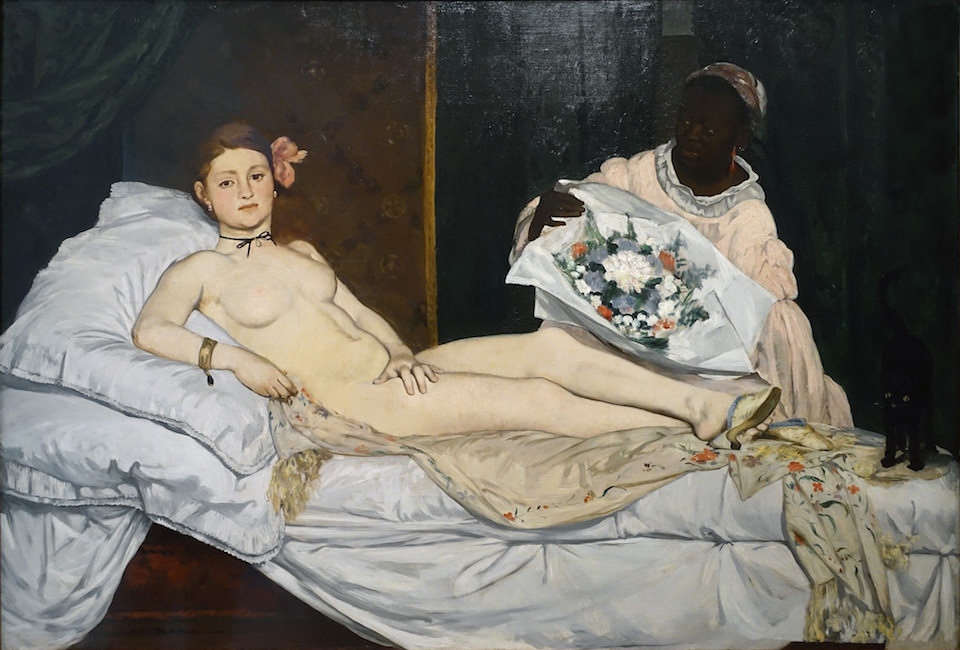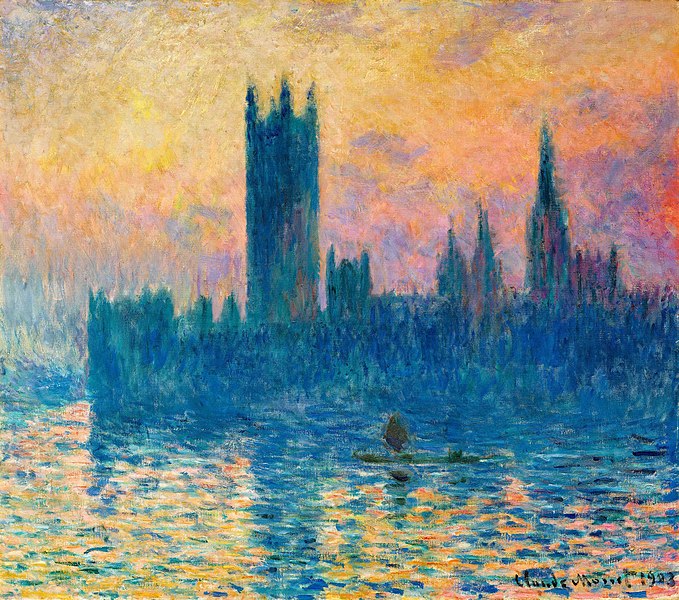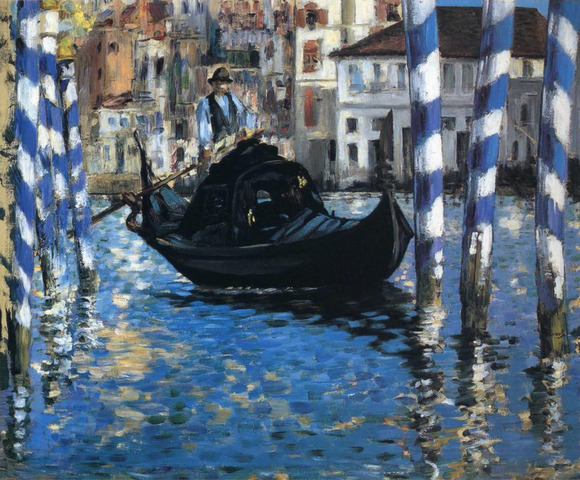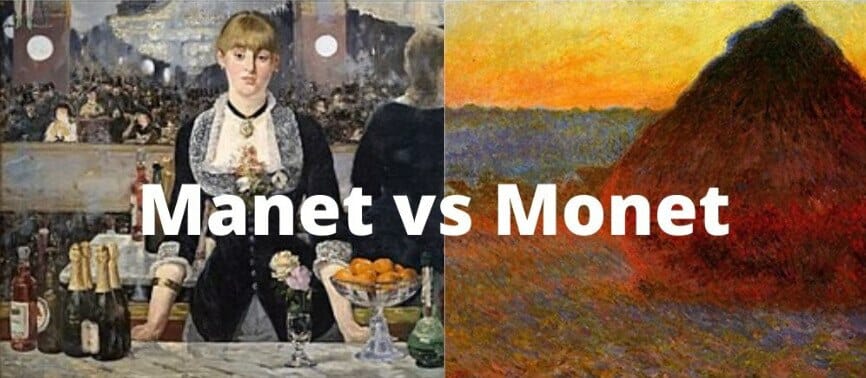Manet vs Monet two artists that are constantly mistaken for each other and is it any wonder with such similar names?
French art is steeped in history and there are numerous artists who have made their marks over the years. Two of the most well-known artists are Claude Monet and Edouard Manet.
While their names are instantly recognizable among anyone who is remotely familiar with art, their names are also easy to confuse.
A simple swapping of the vowels in the name can reduce two of the most famous artists into a confusing mess.
For these reasons, it is important for everyone to note some of the most important differences when comparing Edouard Manet versus Claude Monet so that each artist is well-respected in his own right.
| Aspect | Édouard Manet | Claude Monet |
|---|---|---|
| Artistic Movement | Realism and Impressionism | Impressionism |
| Style | Structured and controlled | Loose and spontaneous |
| Subject Matter | Urban life, historical, and mythological subjects | Landscapes, gardens, natural settings |
| Influence | Influenced Impressionism and bridged Realism and Impressionism | Central figure in Impressionism, shaped its style and philosophy |
Manet vs Monet
The main differences between Manet and Monet is that Edouard Manet was both an impressionist and a realist, whereas Claude Monet was strictly an impressionist.
As a result, there are several ways that people can tell their works apart. Some of the most prominent ways include:
- Studio vs. Outdoor Work: One of the first differences between Edouard Manet and Claude Monet that people will note is where their work is completed.
Edouard Manet primarily worked in a studio. There, he meticulously orchestrated many of his paintings. It was not unusual for him to scrape off paint just to redo it. He slaved in his studio for hours until he got his pieces just the way he wanted them.
In contrast, Claude Monet tended to work outside. He was a true impressionist and wanted to depart the four walls of his studio to paint in the open air. Much of his work has actually been called En Plein Air Painting. - People vs. Landscapes: Another way that Edouard Manet and Claude Monet differed is in terms of their subject matter.
For example, the work of Edouard Manet almost always features people. His work is known for abrupt contrasts of shadow and light along with harsh contours. It is this strict style that helps him carve out his subjects on his pieces.
In contrast, Claude Monet tended to paint a lot of landscape works. He loved to paint seascapes and landscapes. He would allow his brief strokes of paint to dissolve solid forms into something unique that was filled with numerous colors and flashes of light. In this manner, the works of Edouard Manet and Claude Monet differ. - Brush Strokes and Color: Finally, Edouard Manet and Claude Monet differ in how they use brush strokes and color.
Edouard Manet tends to use long brush strokes that have similar colors in different shades. He would vary the amount of white he would use in his work to suggest ripples in his work.
In contrast, Claude Monet tended to use “messier” brush strokes. He was a master of color and light, so many of his works would capture the same subject repeatedly; however, he would simply use different lighting to bring out different features. A seascape would use not only blue but also pink, yellow, and orange.
These are just a few of the many ways that people can tell apart the works of Edouard Manet and Claude Monet. Both artists were, and still are, prolific in their own right; however, in order to truly appreciate everything these two artists bring to the table, it is important to be able to tell their works apart.
An Overview of Edouard Manet
First, let’s take a closer look at Edouard Manet. Edouard Manet is a French artist who was born in 1832 and died in 1883. In the eyes of many, he is the father of modern art.
This is because he was able to break dramatically from strong academic traditions. He was known for breaking from conventional painting categories to create real-world art.
Prior to Edouard Manet, many of the world’s best paintings could fit into either still-life work, portraits, landscape pieces, of historical pieces.

In this manner, Edouard Manet was not as interested in minute details and wanted to focus on his own inherent materials and visual qualities that came along with his work.
Even though he died at age 51 and did not produce a massive number of paintings, he is one of the most famous artists of all time. He is closely associated with some of the biggest art movements of all time including abstraction and Impressionism.
Many of the works of Edouard Manet are on display at the world’s most prestigious museums, including the Musee d’Orsay (Paris) and the Metropolitan Museum of Art (New York City).
An Overview of Claude Monet
Now, let’s take a closer look at Claude Monet. He is also French; however, was born slightly after his counterpart, Manet. Claude Monet was born in 1840 and was a French impressionist who’s name is synonymous with the movement. In many ways, he was inspired by the work of Manet.
Claude Monet is known as a master of color, able to capture it over and over again. He could paint the same subject repeatedly and come up with a completely different work every time.

His goal is to communicate every nuance of light as he saw it. Many of the most famous works of Claude Monet come from series that he painted in the last thirty years of his life. As a result, he is more prolific (in terms of his number of pieces) than Manet.
There are simply more works by Claude Monet than there are Manet pieces, so it is more likely for someone to run into a Monet at a museum somewhere.
Interestingly many often confuse Monet and Van Gogh even though their art is quite different.
The Impressionism Movement Through the Eyes of Manet and Monet
The 19thcentury was a revolutionary time in the world of art. It started in the 19thcentury and was able to elevate many of the works of Edouard Manet to a new plane.
At that time, artists were trying to capture the fleeting moments that took place in the modern world (at that time). As a result, many artists took their works from the studio to dance centers, cafes, and nature in an effort to capture everything they could.
Impressionism has become a word that is synonymous with both of these famous French artists.
Now, when people talk about impressionism, those in the art community usually refer to Edouard Manet and Claude Monet differently.
Edouard Manet was a major influence on the impressionist movement. In many ways, some consider Edouard Manet to be the father of impressionism.

In this manner, Edouard Manet is usually referred to as someone who broke with tradition; however, the works of Edouard Manet are known for their tension.
They show many of the flavors of impressionism without adhering to what most people know as impressionism today.
For these reasons, Edouard Manet is often described as an impressionist artist and a realist.
In contrast, Monet came along several years later. Much of his work is what people consider to be impressionist in the modern use of the term.
Many of the paintings of Claude Monet exhibited some of the marquee styles of impressionism. These included open composition, a unique depiction of light, and visible brush strokes.
Often, Claude Monet would use his art to accentuate the passage of time, turning ordinary subject matter into something different. These are some of the hallmarks of impressionism paintings. The term actually comes from a Monet work that is titled “Impression, Sunrise.”
Impressionism is one of the most famous movements in the world of art. Both of these artists played a major role. Some of the other famous impressionist artists include Edgar Degas, Paul Cezanne, Berthe Morisot, and Pierre Renoir.
Many of these European artists actually exhibited their works together. In contrast, Edouard Manet and Claude Monet actually never exhibited their artwork in the same place.
The Most Important Works of Edouard Manet and Claude Monet
It is important for everyone to note some of the most famous works of Edouard Manet and Claude Monet. They include:
- Le Dejeuner Sur L’Herbe, Edouard Manet: Le Dejeuner Sur L’Herbe is arguably the most famous work painted by Manet. It was originally titled Le Bain. This is a large oil canvas painting that Edouard Manet completed during 1862 and 1863. This painting depicts a nude female along with a scantily dressed female bather who are both enjoying a picnic together. There are two fully dressed men nearby. The painting takes place in a rural setting and sparked both notoriety and controversy. Now, the work is on display at the Musee d’Orsay in Paris.
- Impression, Sunrise by Claude Monet: Arguably the most famous work by Claude Monet, Impression, Sunrise was first displayed in 1874 at a convention that would come to be known as the “Exhibition of the Impressionists.” This work is important because it is credited with inspiring the rest of the impressionist movement. The work features an open lake with a few faded boats underneath a gorgeous sunrise that features contrasting colors to truly capture the entire scene. The work depicts a sunrise in the hometown of Claude Monet, Le Havre. The painting is now on display at the Musee Marmottan in Paris.
Without a doubt, Edouard Manet and Claude Monet are some of the most famous artists of all time. Their works are on display all over the world.
While their names are similar, they did use very different painting styles. It is important for everyone to be able to tell these two famous artists apart in order to appreciate everything they accomplished during their careers. Their work continues to influence artists to this day.

